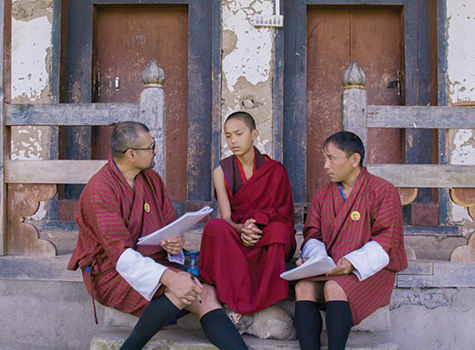
When I was 6 years old, Guru Padmashri Nataraja Ramakrishna came to our house and told my father that he wishes to teach me Kuchipudi dance form. I remember him doing a small dance in our living room. I was astonished to see a man do such exemplary facial expressions depicting a woman. He left such an impression, that even today I remember his dance and the song quite clearly. He sure was a gift to the classical dance forms of Andhra Pradesh and Telangana.
While many of our ancient temples and art forms have been preserved throughout the ages, many more have been lost as well to the devastations of time and foreign rulers. Solely, due to the dedication and determination of some great men and women, some of these precious cultural gems have been revived. The rebirth of Telangana’s heritage dance, Perini Shiva Thandavam also known as Perini, is one such success story.
This dance flourished centuries ago in the Telugu-speaking regions, reaching its peak during the Kakatiya Dynasty’s rule. The dance finds mention in the early medieval work Bharataarnavam by Nandikeshwara. Based on this work, Guru Nataraja Ramakrishna first made mention of Perini in his award-winning book Daakshinaatyula Natyakala Charithra. I actually have a copy of it in my library. As it is written in Telugu language, my reading is a bit slow but steady.
Perini is the militant male dance tradition of the 10th century A.D. This dance honored Lord Shiva and was performed before a battle. The rulers of Kakatiya Dynasty, whose capital was Orugallu, now known as Warangal, were great devotees of Lord Nataraja, the king of dances. As I mentioned before, during their rule, the Perini dance form attained its highest peak. The breathtaking temples they left behind are a clear example of their legacy.
Due to its spiritual history, this dance style became a natural method to stimulate the warrior spirit. With the fall and destruction of Warangal, however, the grand tradition of Perini Thandavam was lost during the pillage and plunder of the Turkic invaders. This majestic dance form almost became extinct until 1974. For the first time in 800 years, this dance form was revived, and adorned the stage. This credit goes to the decades of hard work by the great Guru Padmashri Nataraja Ramakrishna.
Perini takes its name from the Sanskrit word Prerana, which means, “to inspire and invigorate.” It is obvious that the rhythm, chanting of syllables and the incredible speed of the dance clearly inspires the warriors, dancers, and audience alike. When you watch the dance clip below, make sure you look at the unbelievable footwork of the dancer. Dancing to such amazing speeds and using the same foot repeatedly is not an easy task. It takes a lot of stamina, practice, and great fitness by the dancers to execute the rhythms. As you watch this dance style, the most immediately noticeable aspect of this dance is the rapid-fire tempo and execution of moves. It is easy to see why it was the masculine dance of warriors.
The music for this unique dance form is accompanied by Conch shell, drums, bells, and tongue twisting rhythmic syllables enabling dancers to reach a point of frenzy resulting in the audience to sit by the edge of their seats.
As the time passed, they introduced two varieties of Perini, one is Perini Shiva Thandavam for men emphasizing the vigorous male martial aspects, and the other is Perini Lasyam for women focusing on graceful feminine movements. Classical dance has two styles, Marga and Desi. Marga is more spiritual in nature, while Desi is more popular and dramatic in nature and theme. The five most important elements of this Perini dance style are Ghargaram meaning footwork; Vishamam the acrobatic element; Bhavashrayam, the imitation of nature, animals, and demons; Kaivaram, in praise of kings and gods; Geetham meaning music.
There has been some debate about whether Perini is a classical (saastriya) or colloquial (janapada) dance. However, even a casual observer of dance can see the reminiscence of traditional dance styles like Kuchipudi and Bharatha Natyam at play. It is filled with the emotions or rasas of Raudram (fury) and Veeram (valor). Indeed, the text on which it is primarily based (Nritta Ratnavali) and Natyacharya Nataraja Ramakrishna’s own training in Kuchipudi and revival of Andhranatyam only further weight the argument in favor of classical status.
Perini is now considered the state dance of Telangana. To ensure that the efforts to revive this dance form do not perish, it is essential to continue to support this dance form. If the students, teachers, and audience continue to propagate this dance style, I am sure this traditional dance will be preserved and passed on to the next generations.
———-
For questions or comments contact Maha via e-mail at: [email protected]
Posted: Monday, February 4, 2019



